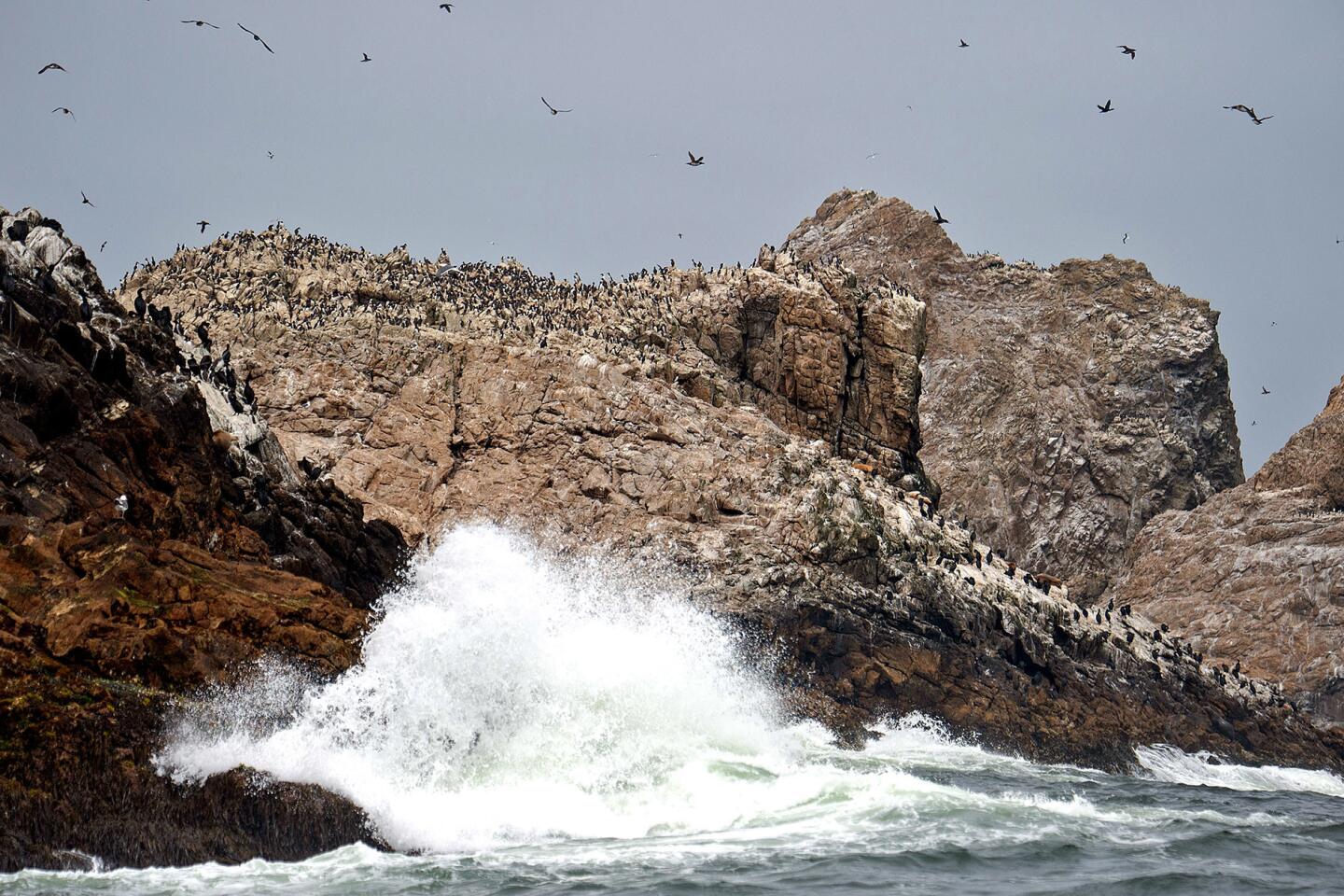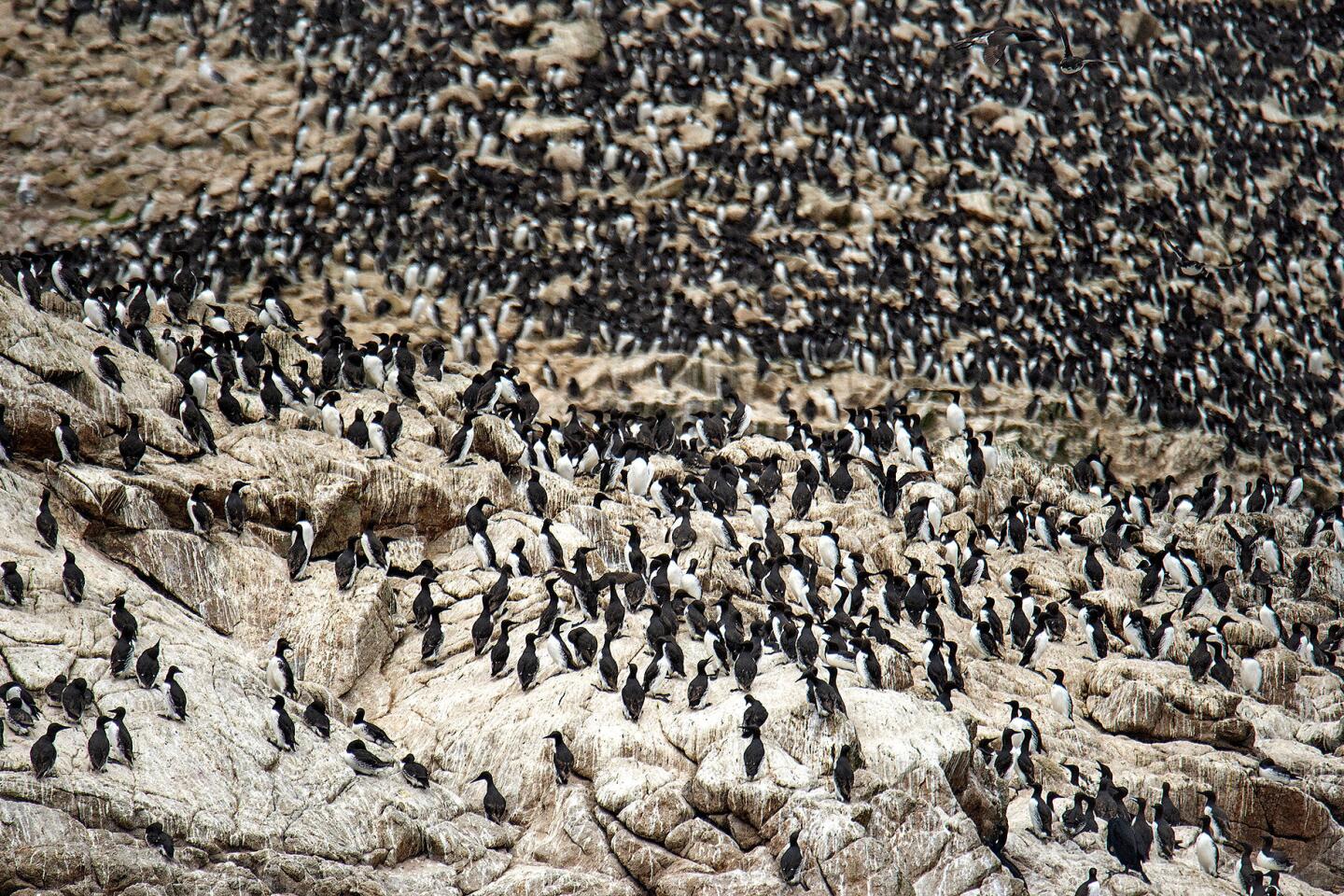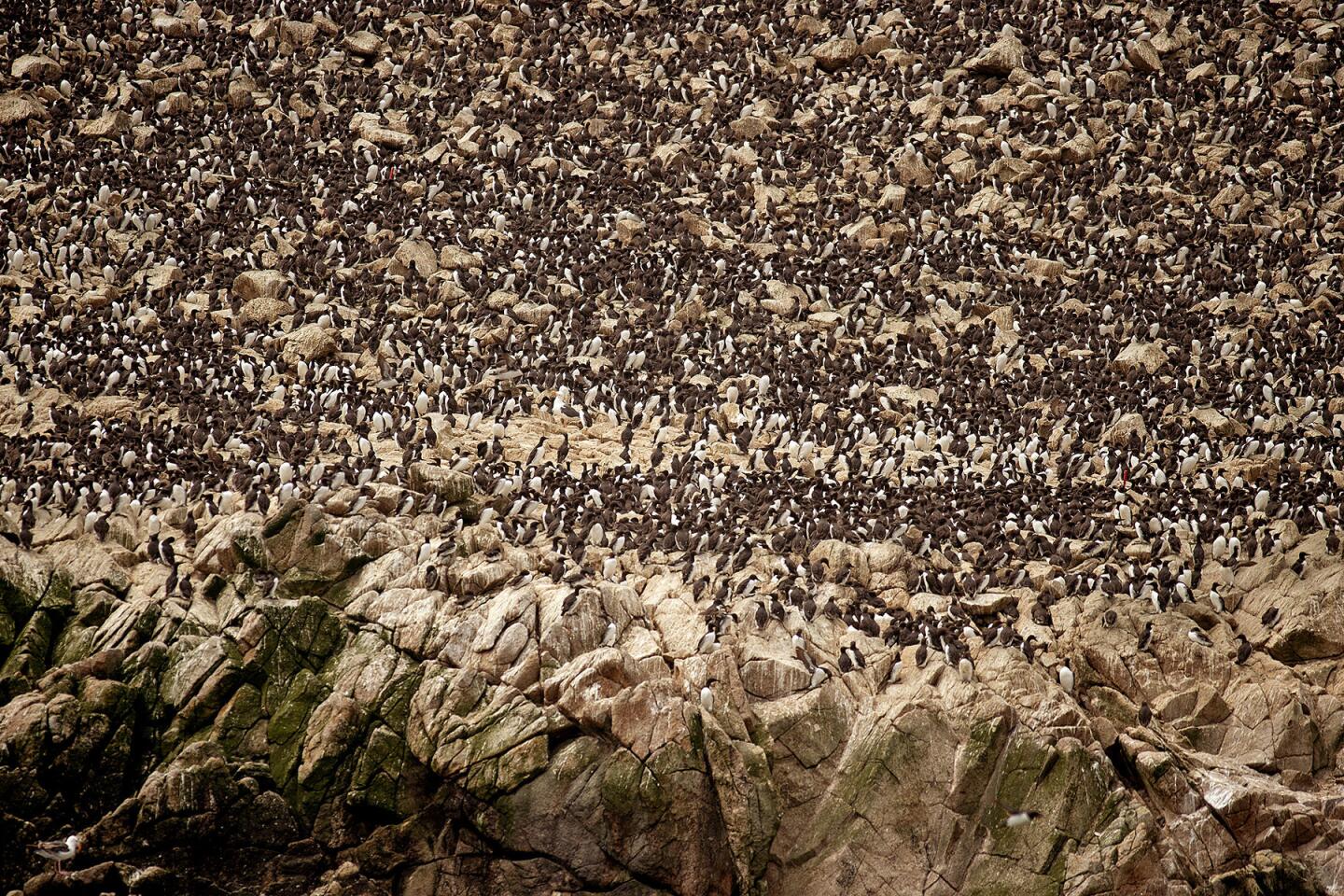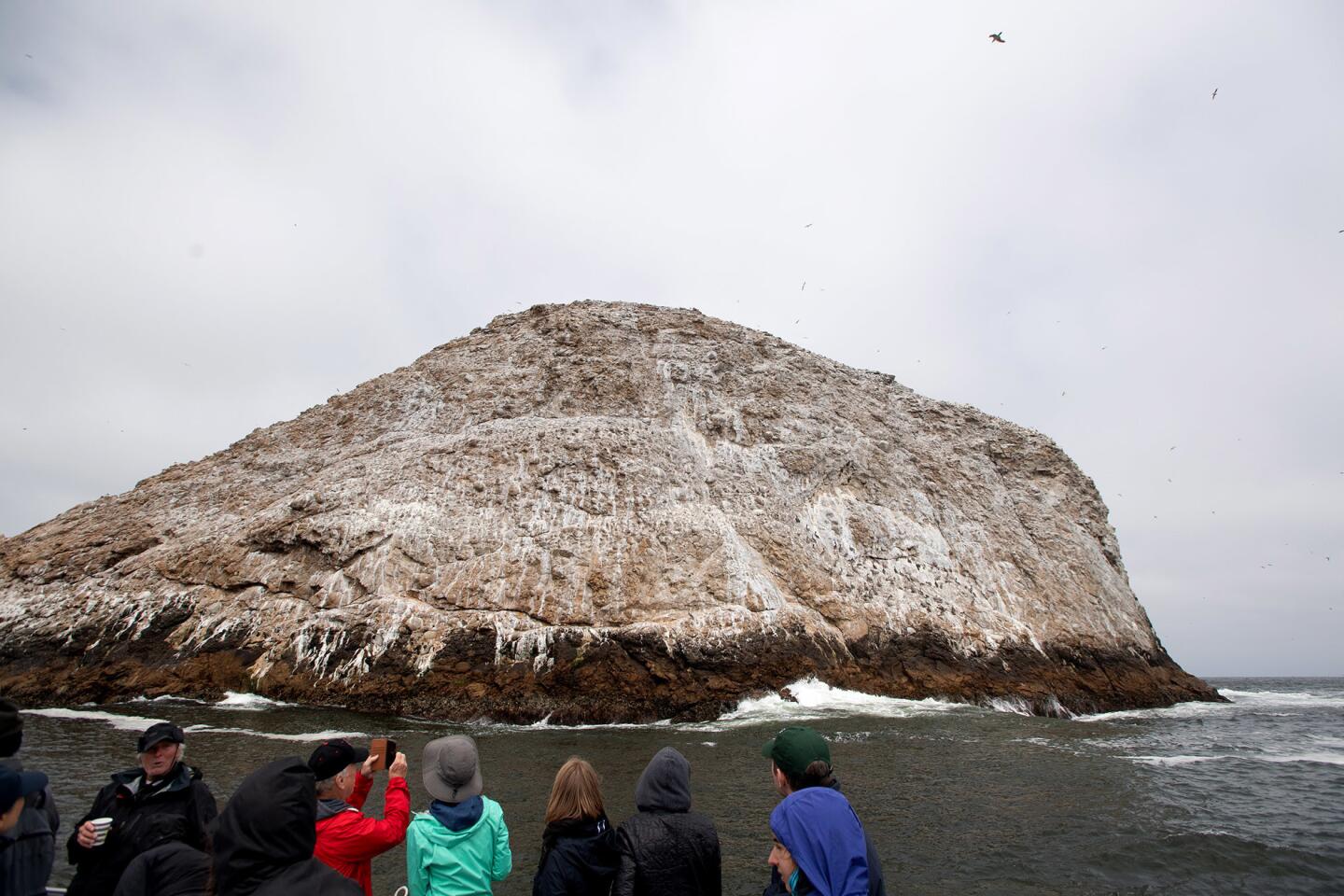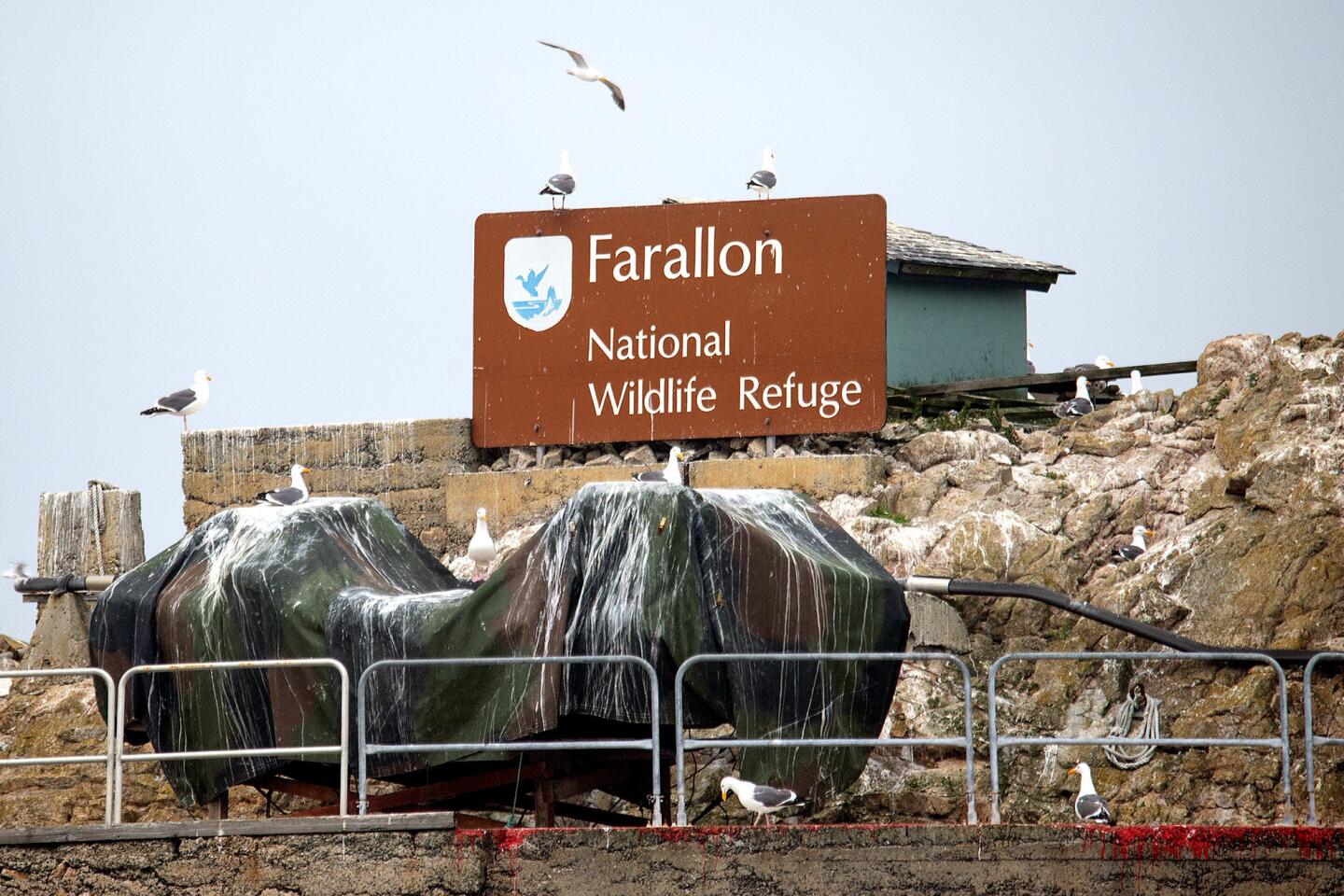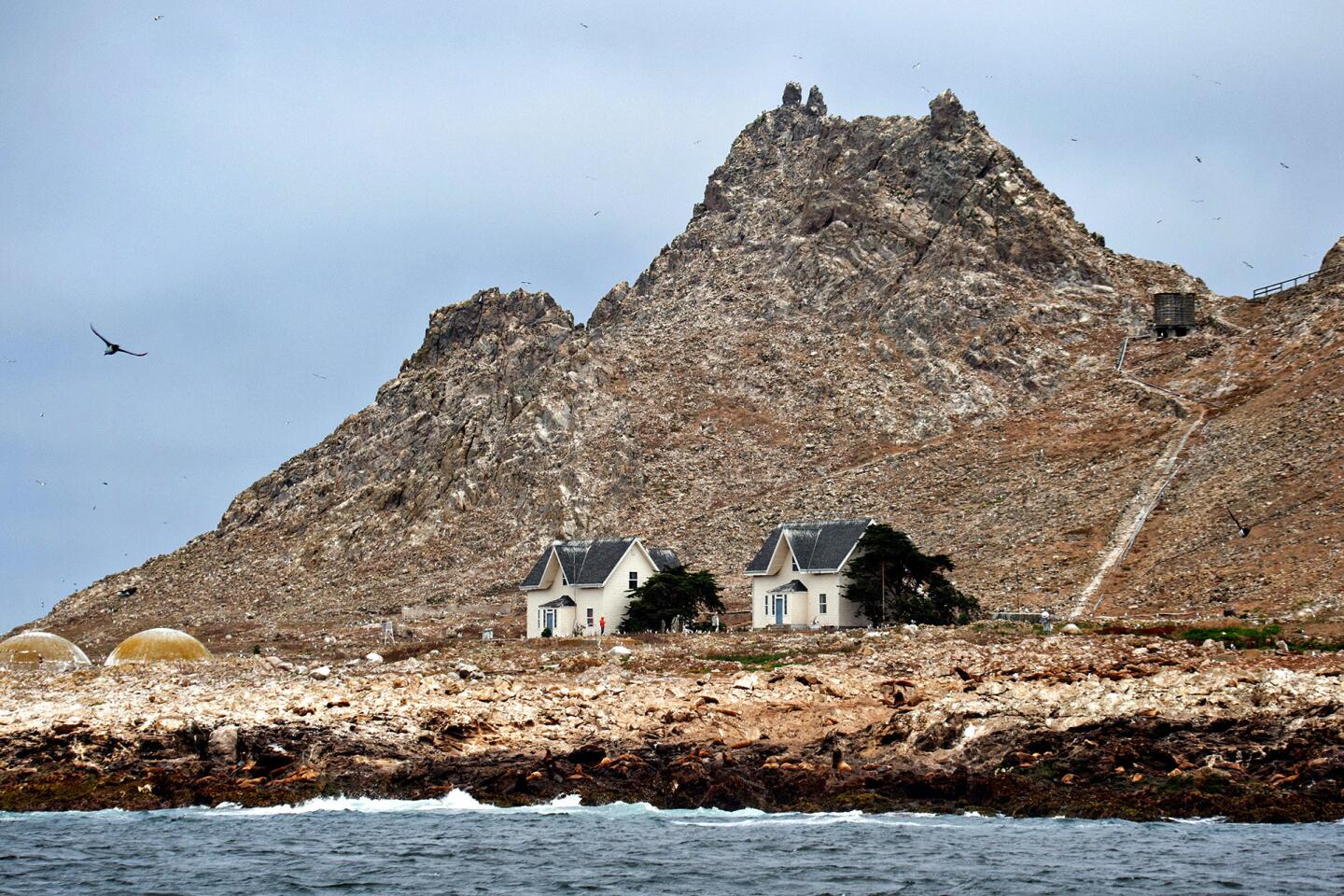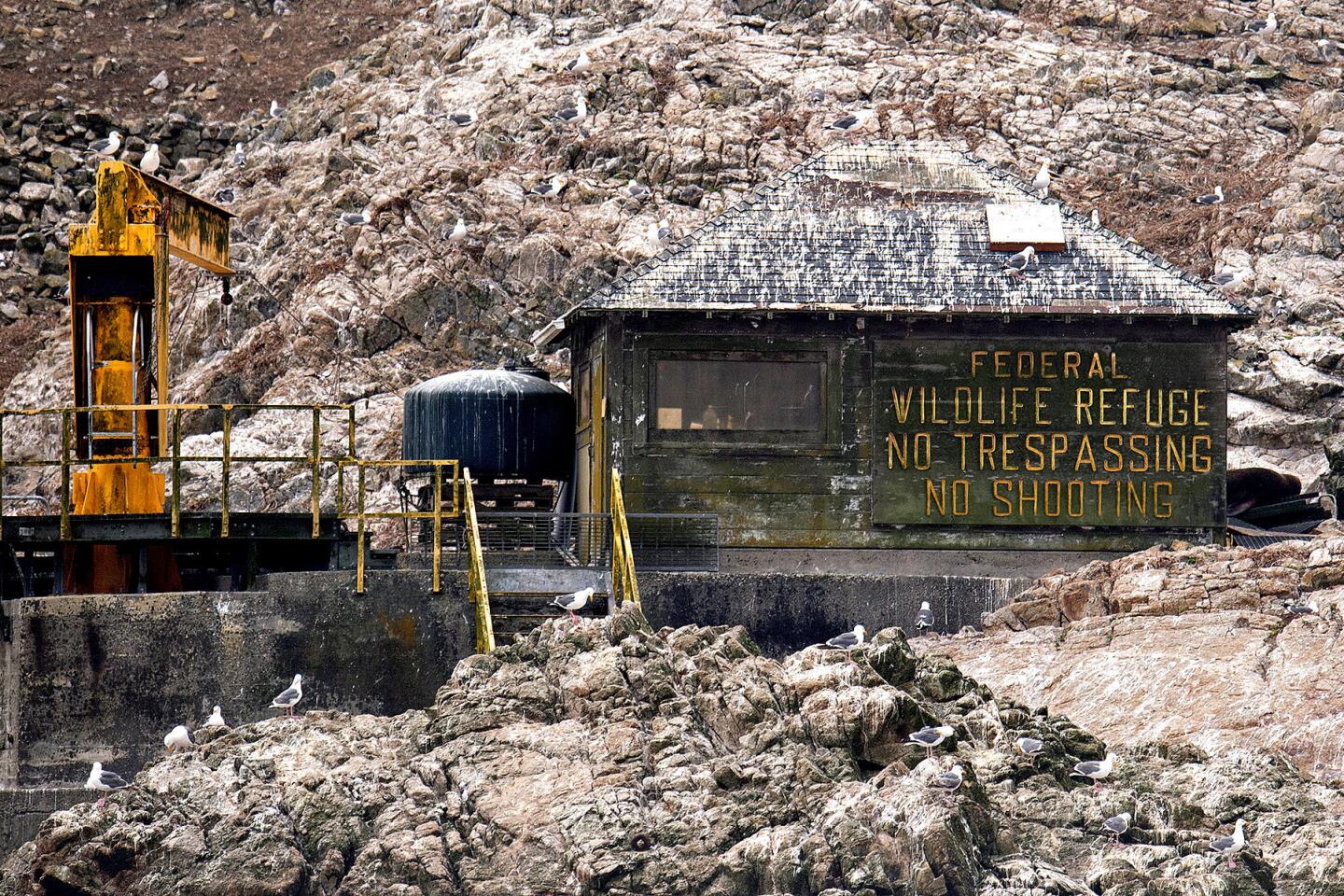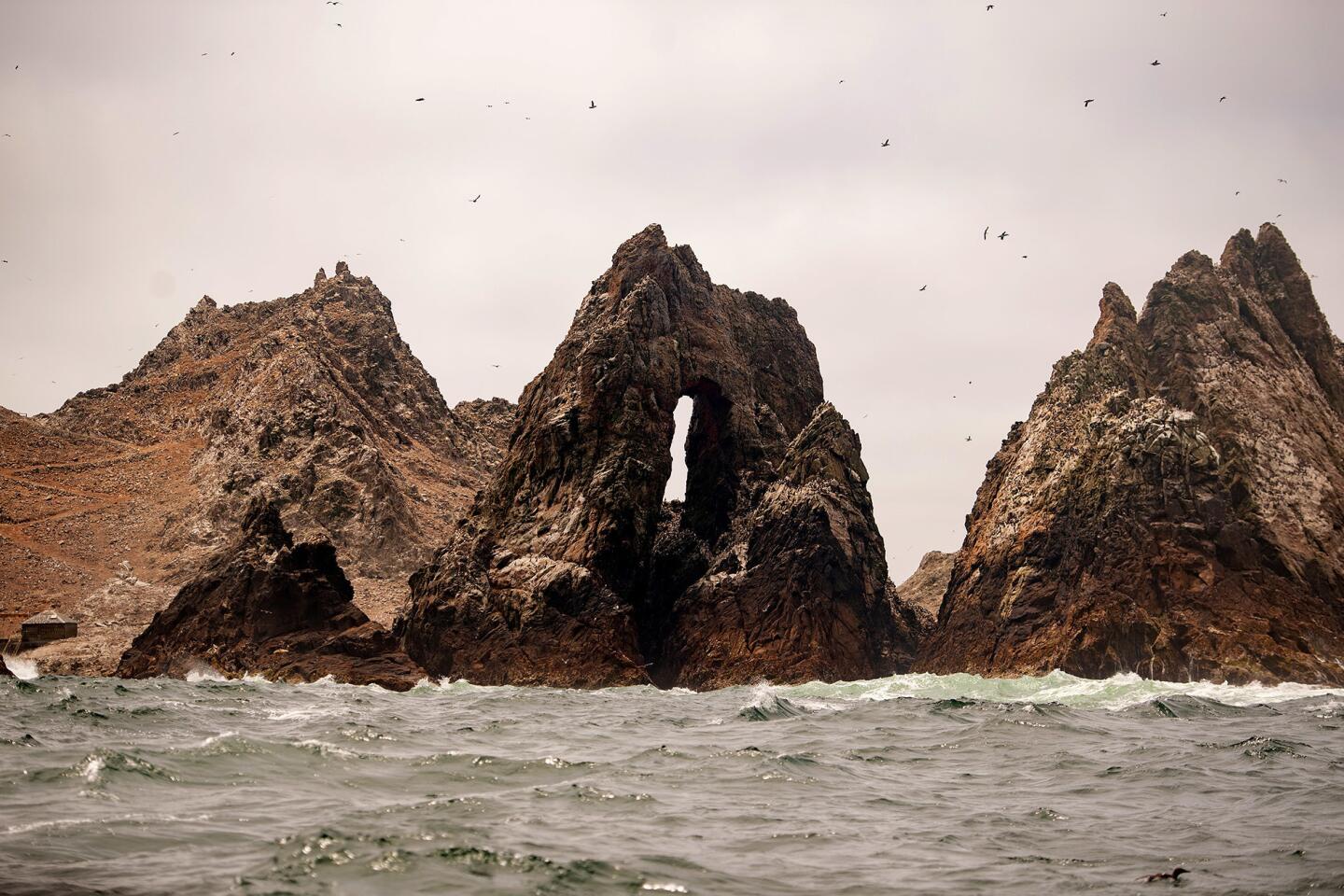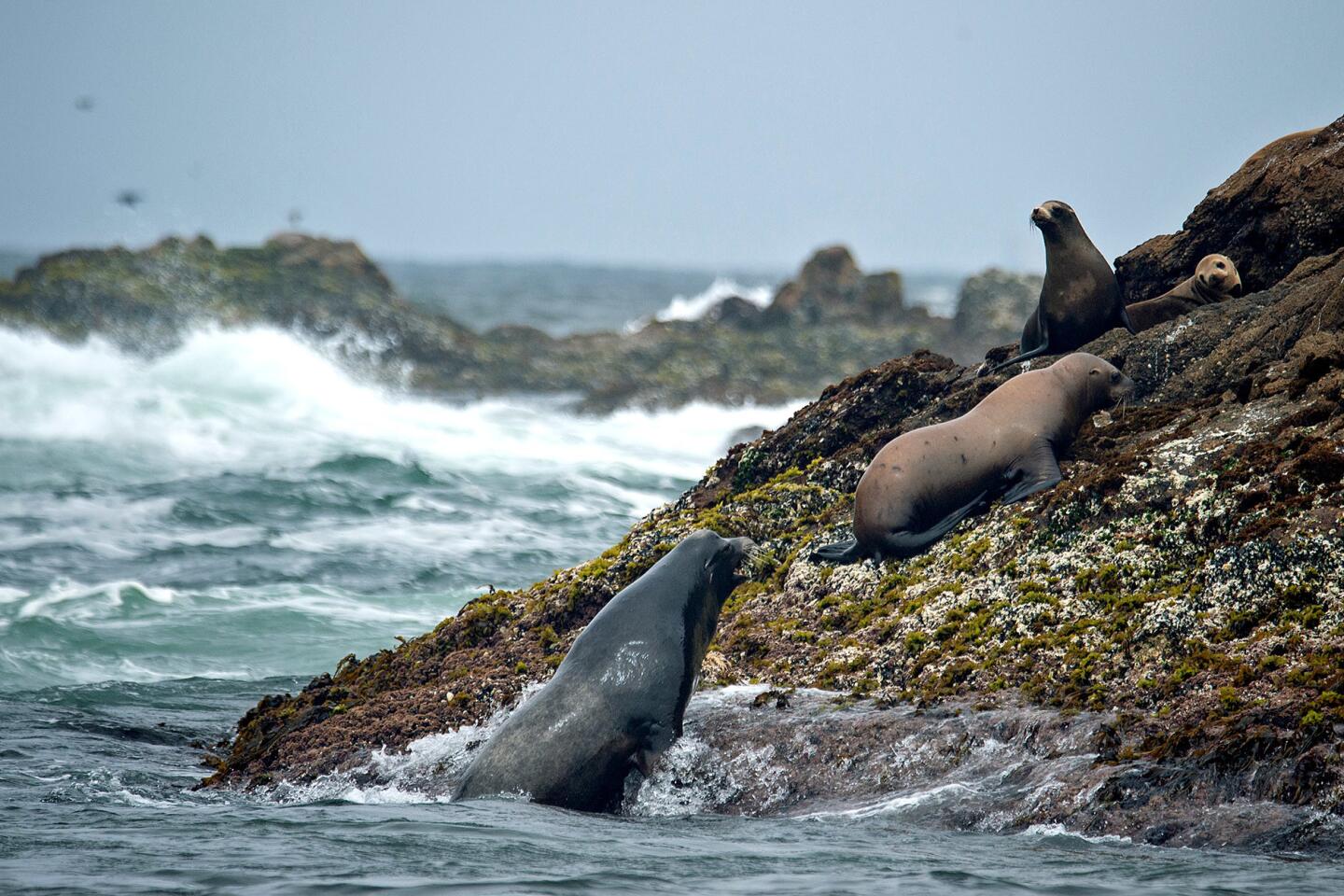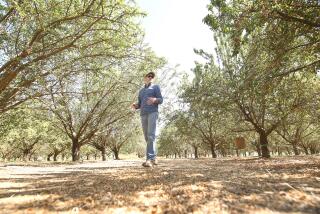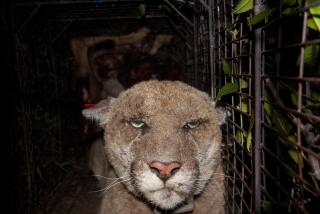Must Reads: The U.S. wants to dump 1.5 tons of rat poison pellets on the Farallon Islands. Biologists say it’s for the best
Reporting from San Francisco — For most humans, life on the jagged Farallon Islands off the coast of San Francisco would be a nightmare: Waves lash the shore with treacherous force, the stench of guano fills the air, and the screech of seagulls is so loud that resident scientists wear earplugs to bed.
But wildlife thrive on “the Devil’s Teeth” — the name given to the Farallon Islands by sailors over a century ago.
The islands boast one of the world’s largest breeding colonies for seabirds, including the rare ashy storm-petrel, and their beaches are covered with lolling sea lions and seals. The waters surrounding the islands teem with 18 species of whales and dolphins.
The islands also host tens of thousands of house mice — an invasive species that is wreaking havoc on the native ecosystem, according to biologists.
The explosive growth in mice has attracted burrowing owls, who not only eat the mice but also prey upon the storm-petrels, a rare bird with a declining population.
The federal government contends that the only way to get rid of the mice is to drop 1.5 tons of rat poison pellets from a helicopter onto the islands. But Bay Area conservationists are worried that the poison, an increasingly controversial rodenticide called brodifacoum, will kill other species and make its way up the food chain.
“This is a case of using a shotgun to go after an ant,” said Richard Charter of the Ocean Foundation, one of the plan’s fiercest opponents.
The U.S. Fish and Wildlife Service, the agency that manages the Farallones, acknowledges that while some non-target species will likely be killed in the process, broadcasting poison over the islands is a tried-and-true method of tackling rodent infestations. Biologists say that the long-term benefits will far outweigh any collateral damage.
“If we didn’t believe this option was going to dramatically benefit the islands, and safely and effectively, we wouldn’t be recommending it,” said Doug Cordell, spokesman for the Fish and Wildlife Service.
The issue is expected to come to a head on Wednesday, when the California Coastal Commission holds a public hearing on the plan.
The FWS published a final environmental impact statement in March, a 300-page document more than a decade in the making. Since its draft was published in 2013, more than 34,000 people have signed a Change.org petition objecting to the proposal.
Santa Cruz County Supervisor Ryan Coonerty has also spoken out against the plan and urged the Coastal Commission to oppose it. The commission’s staff, however, released a report expressing its support for the project, saying it was consistent with the state’s marine protection and water quality policies.
Critics insist there is reason to be wary of brodifacoum, an anticoagulant that causes internal bleeding. Mountain lions in California have been found dead with the rodenticide in their systems after eating small prey that ingested the poison.
California outlawed consumer use of the poison in 2014. And a bill that would ban the use of second-generation anticoagulants like brodifacoum on state-owned lands is making its way through the California legislature. The law would not affect federal lands like the Farallones, however.
The Farallones rodenticide drop would occur in the late fall of 2020 at the earliest, and would require approval by the Environmental Protection Agency and the National Oceanic and Atmospheric Administration.
The mice are a food source for migratory burrowing owls, according to biologists. But when the mouse population crashes in the winter, the owls prey on the ashy storm-petrel, whose population on the islands — where half the world’s storm petrels nest — has been declining since the ’90s. The mice have also spread invasive plant species that crowd out native vegetation. They also feed on the Farallon camel cricket and compete for food with the Farallon arboreal salamander.
At peak season, there are nearly 500 mice per acre on the South Farallon Islands — about 59,000 in all.
Critics do not refute that the mice need to go. But they do not buy the federal government’s insistence that rodenticide is the best way to get the job done.
The Fish and Wildlife Service said it looked at dozens of eradication methods, including mouse fertility control, but ultimately found that poison was the best approach because of its proven efficacy. The agency notes that 28 out of 30 mouse eradication projects undertaken worldwide since 2007 have been successful, and that native species in those places have flourished.
The Farallon Islands have suffered a long history of human interference and exploitation.
In the early 1800s, Russian fur traders harvested blubber from elephant seals and pelts from sea lions. A few decades later during the Gold Rush, when the mice were likely introduced, the new residents of San Francisco needed eggs. So they raided the nests of murres, whose population dropped drastically. The species has seen a revival in recent decades.
And between 1946 and 1970, government and private research agencies dumped thousands of 55-gallon drums of low-level radioactive waste into the Gulf of the Farallones.
The islands now benefit from several layers of protective status. The Farallones were named a national wildlife refuge in 1909 and the waters around them are also part of the Farallones National Marine Sanctuary. The islands are off-limits to the public.
Supporters of the mouse eradication project say that getting rid of the rodents is an essential step in fully restoring island ecology to the way it was before humans discovered it.
And there is a certain urgency to removing the mice, according to Pete Warzybok, a biologist who for the past 20 years has lived part time on the Farallones studying ecosystem conservation.
“We don’t want to wait so long that storm petrels are declining to the point that one fantastic event, like an oil spill or a bad winter season, would knock out the entire population,” Warzybok said.
Critics point to the Fish and Wildlife Service’s 2008 rodent eradication project on Alaska’s Rat Island, where the same poison killed 46 bald eagles. The agency said it learned from its mistakes and has incorporated extra safeguards into the Farallones plan.
The poison pellets would be dropped by helicopters twice over the span of three weeks, according to the plan. Until risk of poison exposure drops, Fish and Wildlife would scare away seagulls — the species most likely to eat the poisoned mice — using fireworks, predator calls and air cannons, a technique the agency calls “hazing” and has been tested on the islands. Raptors such as owls and hawks that might eat the poisoned mice would be temporarily removed from the sanctuary until risk of poison exposure drops.
The potential risk to marine life is low, according to Fish and Wildlife. Seals won’t eat the poison, and any bait that falls into the water will “dissolve quickly or sink to the bottom,” said Cordell, the agency spokesman.
Mouse carcasses will be collected by hand, although Fish and Wildlife acknowledges it could not find every dead animal and that some gulls will probably die after eating the rodents. They estimate that fewer than 1,700 gulls will die. More than that number would affect the local gull population over a 20-year span, according to biologists.
Critics balk at the idea that gulls, known for their persistence and willingness to eat just about anything, will be deterred by pyrotechnics. They worry that dosed gulls will travel to mainland areas like Point Reyes National Seashore and San Francisco’s Fisherman’s Wharf, where they are known to fly.
It’s there that a gull could die and be eaten by a raccoon, which could then become mountain lion prey, said Charter, an advocate for ocean protection issues.
“The fear is using a method that poisons the entire food chain and hurts a lot of animals we care about deeply,” Charter said.
Alison Hermance, director of communications at Wildcare, a wildlife hospital in San Rafael, has seen firsthand how rat poison has affected local species. The organization began testing livers of patients — hawks, owls, foxes, coyotes — about 10 years ago for brodifacoum. They found that 76% of the 600 animals had been exposed to the poison.
“People don’t recognize that this is a much bigger issue,” said Hermance, who called the Farallones poison plan “ludicrous.”
Not all animals exposed to brodifacoum die. But research shows that carrying even small amounts of the toxin in their tissue may compromise health. A 2018 study by UCLA and the National Park system found that exposure to the rodenticide appeared to weaken bobcats’ immune systems.
But scientists say it is unlikely that poison from the Farallones would affect many animals on the mainland. Gulls that eat the dead mice or the poison bait would probably be too sick to fly great distances, according to Hillary Young, a professor of ecology at UC Santa Barbara who has studied other rodent eradication projects. And gulls, which prefer to fly with empty bellies, would have to eat a lot of the poison for it to kill the next animal in the food chain.
Young said rodent eradication is “one of the few conservation tools in our toolbox that works for a sustained period of time.” However, she said she recognizes that the death of non-target animals triggers an emotional response. She said that even in the “worst-case scenario” of Rat Island, the native habitat there is now thriving.
“All the costs are front-loaded,” Young said. “You have to wait for the benefits.”
More to Read
Sign up for Essential California
The most important California stories and recommendations in your inbox every morning.
You may occasionally receive promotional content from the Los Angeles Times.
